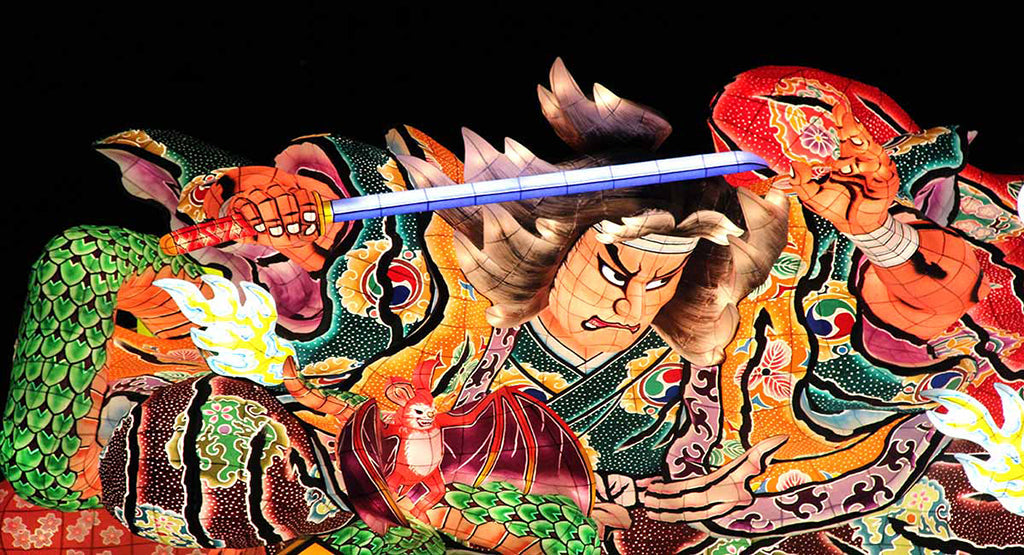Comprehensive Guide to Japan's Large Katana Swords:Naginata and Odachi

Comprehensive Guide to Japan's Large Katana Swords: Odachi Vs Nodachi
Japan’s rich history of swordsmanship includes some of the most awe-inspiring weapons ever forged, among which the Naginata and Odachi stand out as monumental examples of craftsmanship and martial prowess. These field swords, much larger than the typical katana, were designed for warriors who needed an edge in large-scale combat. The Odachi, often referred to as a 'giant katana,' was a great sword used in the Kamakura period and beyond, favored by samurai from various clans, including the Asakura clan. These swords were wielded in the Battle of Anegawa, a pivotal confrontation in the Sengoku period, where figures like Uesugi Kenshin were renowned for their skill with such massive weapons.
In addition to their battlefield significance, these large swords held ceremonial and symbolic value, often displayed at Shinto shrines to honor the spirits of ancestors or gods. The samurai class respected these swords not only for their size but for their craftsmanship, as each giant katana wielder would need extraordinary strength and skill to handle these formidable blades. The Naginata, a pole weapon with a blade similar to a katana, was also widely used during the same periods for both battle and ceremonial purposes.
These large great swords represent the pinnacle of Japanese martial weaponry, designed for warriors who embraced the art of war and revered the blade as both a tool of battle and a symbol of honor. Whether wielded in the heat of battle or displayed at a Shinto shrine, these swords continue to captivate the imagination of modern collectors and martial artists.
Japanese swords hold a special place in the history and culture of Japan, showcasing the artistry and functionality of weaponry during the feudal period. Among these, the polearm-like sword and the Odachi stand out for their unique characteristics and evolution through the centuries. These long blades continue to fascinate collectors and martial artists alike.
The History and Evolution of the Japanese Polearm Sword
The polearm sword, featuring a curved blade mounted on a long shaft, emerged during the Heian period as a practical weapon for soldiers and temple monks. Its length typically ranged from three to six feet, although ceremonial versions could be significantly larger, measuring up to 3.6 meters. These oversized models were impractical for combat but served as status symbols or displays of craftsmanship.
This weapon's popularity increased during Japan's tumultuous feudal period, becoming a staple on battlefields for its versatility. By the Edo period, however, its use declined as samurai were prohibited from carrying such weapons publicly. As a result, the polearm sword found a new purpose in homes, primarily as a defensive tool for women, establishing its modern cultural association as a 'female weapon.'

Role in Self-Defense and Cultural Depictions
The restrictions during the Edo period gave rise to a domestic use of the polearm sword. Left behind in households, it became a means of protection for women against intruders. Its practicality in confined spaces led to the creation of smaller versions, tailored for easier handling. This historical context explains why, in contemporary Japanese media, this weapon is often associated with strong female characters.
The Nagamaki: A Unique Variation
During the Edo period, a new variant called the Nagamaki gained prominence. This design featured a handle nearly as long as the blade, creating a balanced weapon suitable for both cutting and thrusting techniques. The Nagamaki became a favorite among certain warriors, offering a middle ground between traditional long-handled weapons and standard swords.
The large katana sword is a remarkable symbol of authentic Japanese craftsmanship and tradition. Known for its impressive total length and elegant design, this type of sword reflects the skill and artistry of Japanese swordsmiths. With a blade length often exceeding 30 inches, these swords were designed for powerful, sweeping strikes, particularly in open-field or mounted combat. Despite their size, they maintain a precise balance, allowing for both speed and accuracy.
Each large katana sword is hand forged using traditional methods, where high-carbon steel is heated, folded, and tempered to create a blade that is both sharp and durable. The visible hamon, or temper line, showcases the meticulous craftsmanship, combining functionality with beauty. These quality swords represent centuries of refinement, blending resilience and artistry into a weapon that embodies the samurai spirit.
Historically, large katana swords were wielded by samurai as symbols of power and prestige. Beyond their martial applications, they often served as status symbols, with ornate scabbards and guards reflecting the wealth and influence of their owners. These traditional Japanese swords became a testament to the ingenuity and dedication of their creators.
Today, large katana swords are treasured by collectors and martial artists alike. Practitioners value the challenge and skill required to master their use, while collectors admire their historical and cultural significance. Whether displayed as a masterpiece or used in training, these swords continue to honor the legacy of Japan’s samurai and the timeless tradition of forged katanas. Their blend of beauty, functionality, and history ensures their enduring appeal.

Odachi: The Giant Long Sword of Feudal Japan
The Odachi (also referred to as Nodachi or Ōdachi) represents another iconic long blade. Its origins trace back to the late Heian period, influenced by the Warabi-tetou, a type of blade used by the Ainu people. Early examples of this sword featured hollowed-out handles to reduce weight, a design inspired by ancient Japanese tools like Kenukiki tweezers.
Initially used as a cavalry weapon, the Odachi became synonymous with strength and prestige during the Kamakura and Nambokucho periods. By the latter era, swords exceeding 1.5 meters became popular, symbolizing the prowess of samurai warriors. These blades often required extraordinary strength and skill to wield effectively. However, some samurai commissioned oversized Odachi purely for display, as wielding them in battle was impractical.
Key Differences Between Odachi and Uchi Katana
The Odachi is often compared to the Uchi katana, another iconic Japanese sword. While they share similarities, key distinctions include:
- Length and Curve: Odachi swords are generally longer with a more pronounced curve, though exceptions exist with shorter Odachi or larger Uchi katana.
- Carrying Style: Unlike the Uchi katana, which is worn at the waist, the Odachi is carried using the double-ear hanging method, a style influenced by Persian techniques introduced during China's Southern and Northern Dynasties.
- Battle Role: The Odachi was favored for its ability to cut down enemies from horseback, while the Uchi katana became the standard sidearm for close combat.

Challenges of Using Long Blades in Combat
Wielding a long blade like the Odachi posed unique challenges. Striking the ground during a missed attack could damage or even break the blade. To address this, some Odachi were deliberately left unquenched, prioritizing durability over sharpness. Despite these limitations, the weapon remained a popular choice for its intimidating presence and cutting power.

Modern Appeal of Japan Longer Katana
Today, Japanese long swords captivate martial artists, historians, and collectors around the world. These iconic weapons are not only admired for their intricate craftsmanship but also cherished as symbols of Japan's rich cultural heritage. The allure of these swords lies in their dual nature—both as formidable weapons of war and as exquisite works of art.
For martial artists, these blades are more than tools; they embody discipline, precision, and the philosophy of the samurai. Practicing with long swords like the polearm weapon or the Odachi requires mastery of specialized techniques and a deep understanding of their unique balance and handling. Training with these weapons connects practitioners to centuries-old traditions, preserving the legacy of Japanese martial arts.
Historians are drawn to these swords for their historical significance and the stories they tell about Japan's feudal past. Each blade reflects the technological advancements, artistic trends, and social dynamics of its era. From the Heian period, when polearm swords served monks and temple soldiers, to the Kamakura and Nambokucho periods, where the Odachi symbolized the strength and prestige of samurai, these weapons provide a tangible link to the past.
Collectors value these swords as rare and beautiful artifacts. Authentic reproductions and antiques are highly sought after, with each piece offering a unique blend of functionality and artistry. The meticulous forging process, which can take weeks or months, ensures that even modern reproductions honor the techniques used by traditional Japanese swordsmiths. Whether displayed in homes, dojos, or museums, these swords serve as powerful reminders of Japan's storied history and culture.
For those seeking to own a piece of this legacy, platforms like Coolkatana offer high-quality reproductions that cater to a variety of needs. Whether you’re a martial artist seeking a functional training weapon or a collector looking for a stunning centerpiece, these reproductions strike a perfect balance between authenticity and durability. Many of these swords are crafted using traditional methods, featuring carefully selected materials, detailed fittings, and precise attention to balance and weight.
Beyond their historical and practical value, Japanese long swords also hold a timeless appeal in modern media and popular culture. Frequently featured in movies, anime, and video games, these weapons continue to capture the imagination of audiences worldwide, inspiring admiration for their elegance and destructive power.
Ultimately, Japanese long swords—whether the graceful polearm sword or the majestic Odachi—remain enduring symbols of a bygone era, connecting modern enthusiasts to the spirit and tradition of the samurai. Their blend of artistry, functionality, and history ensures their relevance and appeal will continue to inspire generations to come.
